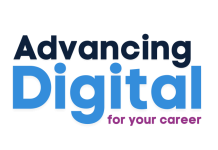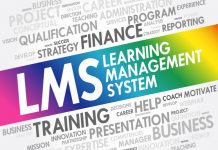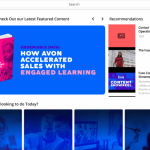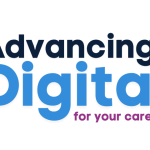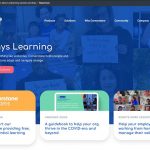In this article, John Fallon of immersive learning simulation specialists, ETU, offers advice on how to measure training ROI when it comes to employee upskilling.
Your employees should always be learning. They should always be seeking new ways to bring value to the organization. However, this doesn’t happen on its own. It’s a two way street, with managers playing a large role in employee upskilling to create the biggest impact across the board.
That said, if you want to free up your managers for their highest and best use responsibilities, now’s the time to reevaluate how upskilling fits into your organization in 2023 and beyond. Plus, you’ll learn how an immersive learning tool can help you track and measure the ROI for employee upskilling efforts, which is an otherwise challenging endeavor for many businesses.
Measuring the ROI in employee upskilling?
Assigning a formula to the return on investment (ROI) of employee upskilling isn’t difficult. Use the basic formula ROI = (Net Benefits of Training/Costs of Training) x 100 — to calculate it.
But there’s a problem with that. It doesn’t tell the entire story or offer clarity into what you should consider as the “net benefit of training.” To define this, you must measure impact and assign a value to the net benefit of training. There are several ways to do this which will be discussed shortly, but it’s important to base your approach on factors like an employee’s current skill set and an overarching business objective.
Before we get there, it’s important to recognize the inherent value in employee upskilling right off the bat. Sourcing new talent and skills externally is more challenging and expensive than ever before. In simple terms, you can’t bring on a new employee every time you need someone with a specific skill. It takes too long and it costs too much to do so.
This is where employee upskilling comes into play. With a talented individual on staff who’s already familiar with your company, you can teach them additional skills to avoid making a new hire or bringing in a third-party service provider.
Thus, you can use market pricing for external services as a starting point for net benefit, as the money saved from keeping services in-house is a surefire benefit. But this is a preliminary number and doesn’t highlight the full value, so business outcomes are a better measurement. More on that later.
To optimize upskilling efforts upfront, ask questions like:
- What steps can you take to accelerate the speed of upskilling?
- What is the overall cost of upskilling through internal training vs. hiring a new employee with the required skill set?
- How will you measure performance to determine how and if the employee is progressing?
Of course, take into consideration the type of skills training you’re providing. Technical skills are typically more straightforward to measure, but soft skills — such as communication, critical thinking, and leadership — can be just as impactful while proving difficult to quantify.
Because ROI around soft skills can be more challenging to measure objectively, you may need to consider a learning tool to show proficiency and improvement over time.
Related video – how Merck saw measurable results from DEI simulation training:
Immersive learning and simulation-based training
Measuring ROI in employee upskilling, particularly those associated with soft skills, requires a new approach to learning. Old-school, traditional methods are no longer as effective as they once were. Instead, immersive learning – and specifically, simulation training for employee upskilling – can be extremely powerful.
These new methods of training are better suited to measuring ROI in employee upskilling for many reasons, led by the fact that KPIs are specific to the type of training you’re conducting. Rather than generic KPIs that only measure surface-level metrics, those associated with immersive learning and simulation-based training are more specific. This allows for a more efficient and accurate way to measure ROI, because there are actual metrics tied to soft skills possessed by individuals throughout your workforce, even for a global company employing remote employees.
How to link learning and training to business outcomes
Measuring net benefits needs to go deeper than simply assessing how much a third-party business would charge for the same skill or service. You need to link learning and training to specific, internal business outcomes, or you’ll be unable to see the full net benefit of training. This helps you determine if your decision is paying off not just in terms of money saved, but true value to your organization.
While it’s true that linking a specific training initiative to a business outcome can be challenging, it doesn’t mean you should put it on the back burner. Instead, tie a shared business objective to a measurable goal that can be linked to learning and development.
For instance, for a specific critical skill, you might find it valuable for a group of promising young professionals to move from 70% to 90% proficient in management skills within a defined period—let’s say 1 year. If you can figure out what doing so would mean for your bottom line, in this case saving on new hire training and ramp-up time for new managers brought into the company, then you have a more concrete value to apply as the net benefit within the ROI formula.
What is the true value of upskilling?
In an overall sense, upskilling keeps you competitive within your industry. But it brings a slew of additional benefits to your organization.
One of the best examples is staff retention. Many employees feel the need to continually develop their skills and grow their careers. Without this, they may become unhappy with their career growth, manager, and employment situation as a whole, and leave the company sooner than later. That’s a huge drain on company resources, and bad news for the business in the short term.
Upskilling allows an employee to add to their skill set, increase their knowledge base, and gain experience in areas that can help them boost their career in the future. It’s also valuable from an engagement perspective by keeping employees “locked in.” It gives them a clear route to promotion, which incentivizes them to continue giving their best day in and day out. While that might not be as measurable, it’s going to help lift your business in additional, intangible ways.
The bottom line
Focusing on employee upskilling allows you to better nurture your team, increase employee engagement and retention, and ensure that every individual is growing their career. Start by identifying positive business outcomes and implement tools to help you measure progress each step of the way. Then, you’ll be able to regularly assess ROI by tying concrete metrics to soft and hard skills alike to ensure your business is trending in the right direction.
Want to learn more on this topic?
ETU offer a wide range of excellent resources for modern learning on their website, including their complete immersive learning guide that details the pros and cons of various approaches. Well worth a read for anyone involved in corporate L&D.




